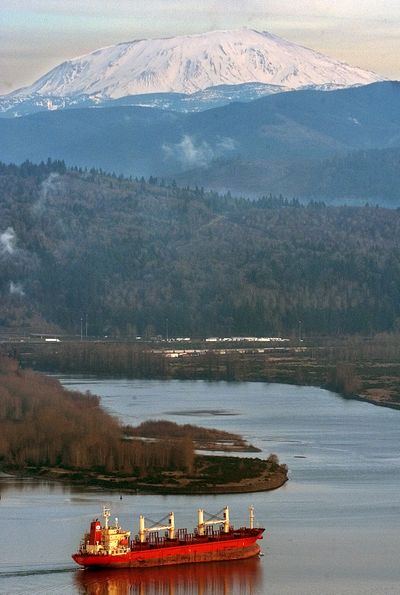Forest Service sees no harm in mining near St. Helens

LONGVIEW, Wash. – A mining company can prospect for gold, copper and other minerals near Mount St. Helens, the U.S. Forest Service said.
Drilling planned 12 miles north of the volcano would not have a major impact on the environment of the Gifford Pinchot National Forest, the agency said Tuesday.
If the Bureau of Land Management agrees, drilling could begin at 23 sites as soon as next summer, the (Longview) Daily News reported Wednesday.
Further study and more permits would be required to develop a working mine.
“This is definitely not about whether there’s going to be a mine of any kind,” said Cowlitz Valley District Ranger Gar Abbas. “That’s a whole different review process.”
Two federal agencies must approve because the Forest Service regulates the surface and BLM regulates underground land use.
Ascot Resources, based in Vancouver, B.C., will use the test drilling to assess whether mineral deposits are rich enough to warrant mining. Holes bored in the 1970s showed high levels of copper, gold, silver and molybdenum, which is used in making steel alloys.
Ascot has said it would mine below the surface, but critics fear Ascot would seek an open pit mine.
Environmentalists, recreation groups and some local governments oppose a major mine on the edge of the Mount St. Helens National Volcanic Monument and near the Green River in the Cowlitz River watershed.
“The agency decision wasn’t consistent with the original intent for the land, so it’s really frustrating for us that they’re moving forward with the exploratory drilling,” said Jessica Schafer, conservation director for the group Gifford Pinchot Task Force.
Previous plans by General Moly, an Idaho company, to mine on the site met public opposition. The BLM denied the lease application in 2008, and the General Moly dropped its plans. Ascot has since obtained an option to buy General Moly’s mining claims.
Ascot plans to drill 63 holes. Each hole would be about 2 to 3 inches in diameter to a depth of around 1,000 feet, the Columbian reported.
The BLM is the lead agency on the application process and has received close to 6,000 comments on the drilling proposal, spokesman Michael Campbell said.
The BLM’s final decision also will allow the appeal process to begin.